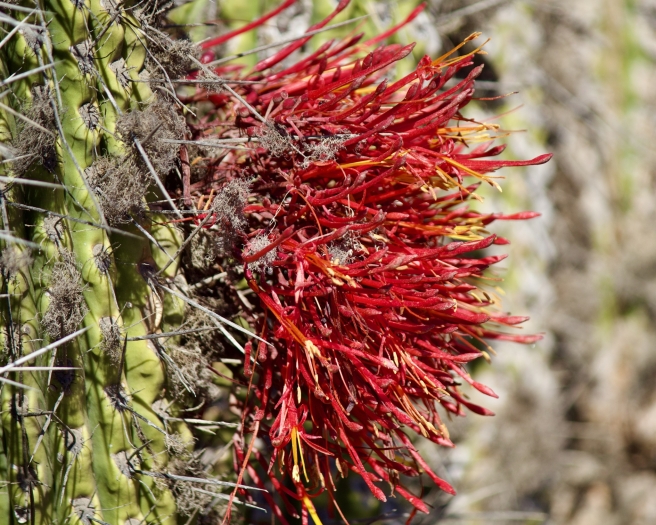Cactus Mistletoe
(Tristerix aphyllus)
Cactus Mistletoe (Tristerix aphyllus)
/
/

Ben Lyle Bedard
CC BY 4.0
Image By:
Ben Lyle Bedard
Recorded By:
Copyright:
CC BY 4.0
Copyright Notice:
Photo by: Ben Lyle Bedard | License Type: CC BY 4.0 | License URL: http://creativecommons.org/licenses/by/4.0/ | Rights Holder: Ben Lyle Bedard | Publisher: iNaturalist | Date Created: 2022-04-16T13:04:27-07:00 |
























Estimated Native Range
Summary
Tristerix aphyllus, commonly known as the cactus mistletoe, is a holoparasitic plant species endemic to the arid and semi-arid regions of Chile, particularly thriving in the Chilean matorral. It parasitizes cactus species such as Echinopsis chiloensis and Eulychnia acida, with only its flowers and fruits visible outside the host plant. The mistletoe produces deep red or yellow-orange tubular flowers that are often showy and bloom from spring to early summer, providing a stark contrast to the green or gray-green of its cactus hosts.
Cactus mistletoe is not typically cultivated due to its parasitic nature, but it is of ecological importance in its native habitat, where it offers nectar to hummingbirds and other pollinators. Its fruits are also a food source for local wildlife. In terms of cultivation, it requires a host cactus and is not grown independently. It is an interesting example of plant parasitism and coevolution with its cactus hosts. Due to its specialized lifestyle, it does not present common gardening problems such as diseases or aggressive roots, but its survival is inherently linked to the health of its host plants.CC BY-SA 4.0
Cactus mistletoe is not typically cultivated due to its parasitic nature, but it is of ecological importance in its native habitat, where it offers nectar to hummingbirds and other pollinators. Its fruits are also a food source for local wildlife. In terms of cultivation, it requires a host cactus and is not grown independently. It is an interesting example of plant parasitism and coevolution with its cactus hosts. Due to its specialized lifestyle, it does not present common gardening problems such as diseases or aggressive roots, but its survival is inherently linked to the health of its host plants.CC BY-SA 4.0
Plant Description
- Plant Type: Vine
- Height: 3-10 feet
- Width: 1-2 feet
- Growth Rate: Moderate
- Flower Color: Red
- Flowering Season: Summer
- Leaf Retention: Deciduous
Growth Requirements
- Sun: Full Sun, Part Shade
- Water: Low
- Drainage: Fast
Common Uses
Drought Tolerant, Low Maintenance, Showy Flowers
Natural Habitat
Arid and semi-arid regions of Chile, particularly the Chilean matorral
Other Names
Common Names: Mistletoe Cactus
Scientific Names: , Tristerix aphyllus, Loranthus aphyllus, Loranthus aphyllus, Loranthus cactorum, Loranthus pumilus, Loranthus pumilus, Phrygilanthus aphyllus, Phrygilanthus aphyllus, Phrygilanthus aphyllus f. luteus
GBIF Accepted Name: